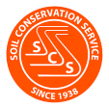Project SW3: Evaluating forest road network to protect forest waterways
 |
 |
Forest roads provide important access for the community, for example emergency management, recreation and timber harvesting. However, poor road design and maintenance can cause soil erosion and impact water quality and aquatic biodiversity.
The Forest Monitoring Steering Committee appointed Alluvium to develop a cost-effective method to evaluate the effectiveness of forest road networks in maintaining water quality.
Modelling framework
Alluvium have delivered a risk-based model to enable a consistent and cost-effective approach to assess the NSW forest road network. The model can be used to improve the allocation of resources and to continually improve road design and management through time.
A final report explains the model and method, including field assessment protocols.
The excel based model is available here and on NSW SEED.
The approach
The modelling framework is based on published research in forest road impacts on sediment delivery across different tenures and road types in NSW. The modelling considers two processes: erosion on roads and associated drainage infrastructure and the probability that eroded sediment will reach a stream.
Overall, users of the risk-based model move through a five-step process. The risk assessment uses two key outputs from this project: the state-wide sediment delivery potential model (the state-wide model), and the local scale sediment delivery potential model (the local model). The state-wide and local models use the best available scientific understanding of the processes that the drive erosion of road surfaces, runoff generation and the downslope transport of runoff and sediment to waterways.
The model was tested in the field with NSW land managers. Further field data, including erosion responses should be collected by NSW land agencies to improve the model over time. This will help ensure that field assessments and monitoring activities provide value beyond the local setting where the data is collected.
NSW agencies, land managers and Dr Peter Hairsine provided technical review and feedback throughout the project and on the final model and report.
Reports and datasets
- Soil and water resources – road network - Discussion paper (September 2020)
- Soil and water resources – road network - Final report (November 2022)
- Soil and water resources – road network - Model
